In the January/February issue of Door Security + Safety magazine, I have an article giving a preview of two important changes that have been approved for the 2027 I-Codes. If you want to print and save the article for future reference, you can download a PDF here.
~~~
This Decoded article will be published in Door Security + Safety
.

The model codes that are used as the basis for most US state building codes and fire codes are published by the International Code Council (ICC) and the National Fire Protection Association (NFPA). The codes that we commonly refer to for requirements related to door openings are the International Building Code (IBC), the International Fire Code (IFC), and NFPA 101 – Life Safety Code.
These codes are revised on a 3-year schedule, with the code development cycle consisting of the submission of proposals, several rounds of technical committee hearings and public comments, resulting in the approval of the new model codes. States and local jurisdictions may then adopt these codes, often modifying them to include requirements that are specific to the jurisdiction.
Many states have already adopted the 2021 editions of the model codes, and the 2024 editions are now available for adoption. The code development cycle for the 2027 model codes is underway, and the Builders Hardware Manufacturers Association (BHMA) Codes, Government, and Industry Affairs Committee (CGIA) has submitted several dozen code change proposals for consideration. In addition, the committee monitors proposals submitted by other organizations and individuals, to determine their impact on the door and hardware industry.
Several important changes and clarifications have already been approved for inclusion in the next editions of the I-Codes and are expected to become part of the IBC and IFC. While changes do not apply until the code is adopted in a particular jurisdiction, they are often used as a basis for requests for modifications submitted to the Authority Having Jurisdiction (AHJ). Many changes are actually clarifications to help with consistent interpretations and enforcement. These clarifications may be helpful even before the new codes are published.
This article will cover just two of the many changes to the 2027 I-Codes that once finalized will impact doors and hardware. For complete information on the ICC code development process, refer to ICCsafe.org.
 Mandatory Locks in Educational Facilities (Proposal E57-24)
Mandatory Locks in Educational Facilities (Proposal E57-24)
During the code development cycle for the 2018 model codes, the topic of safely locking classroom doors in educational facilities was discussed at length. While some proponents of classroom barricade devices suggested that the code requirements for egress should be compromised in favor of security, many opposed that view. Locksets have provided the necessary level of security in past school shootings, while also meeting the code requirements for egress, fire protection, and accessibility.
A section was added to the 2018 I-Codes, called “Locking arrangements in educational occupancies.” This section addressed Group E and Group B educational occupancies (schools, colleges and universities) – specifically doors serving classrooms, offices, and other occupied rooms. These spaces are permitted to have locks designed to keep intruders from entering the room, if certain criteria are met.
One important change to the 2018 edition of the model codes was to require these doors to be capable of being unlocked from outside of the room with a key or other approved means. This allows school staff and emergency responders to quickly enter the room to render aid. The new section also reiterated that these doors must be openable from within the room in accordance with the requirements of Section 1010.1.9. Among other requirements, this section mandates doors that open for egress one releasing motion, without a key, special knowledge, or effort, and without tight grasping, pinching, or twisting of the wrist.
The requirements of this section of the I-Codes did not change much from the 2018 edition to the 2021 and 2024 editions. Doors in schools and other educational facilities are permitted to be locked, as long as they allow authorized access, free egress, and comply with the accessibility standards. Unfortunately, several school shootings have occurred that demonstrated the need for additional code changes.
Beginning with the 2027 edition of the IBC, doors in schools, day care centers, colleges and universities will be REQUIRED to be lockable, rather than being permitted to be lockable. The requirements apply to classrooms, offices, and other occupied rooms in the applicable use groups. In addition to the mandates of this section that were included in the previous editions, the 2027 IBC will state: “The doors shall be capable of being locked from inside the room.”
The new code will also include locking requirements for exterior entry doors in these facilities. Exterior doors must be lockable from the egress side of the door – opening the door to lock or unlock the outside trim will not comply. This section will also require at least one door on each building face to be able to be unlocked from the outside with a key or other approved means.
These modifications to the 2027 IBC will help to ensure that doors serving schools will be lockable without opening the door and will allow emergency responders to enter. This will enhance security and safety protocols for students and staff, facilitating lockdown and reducing emergency response time.
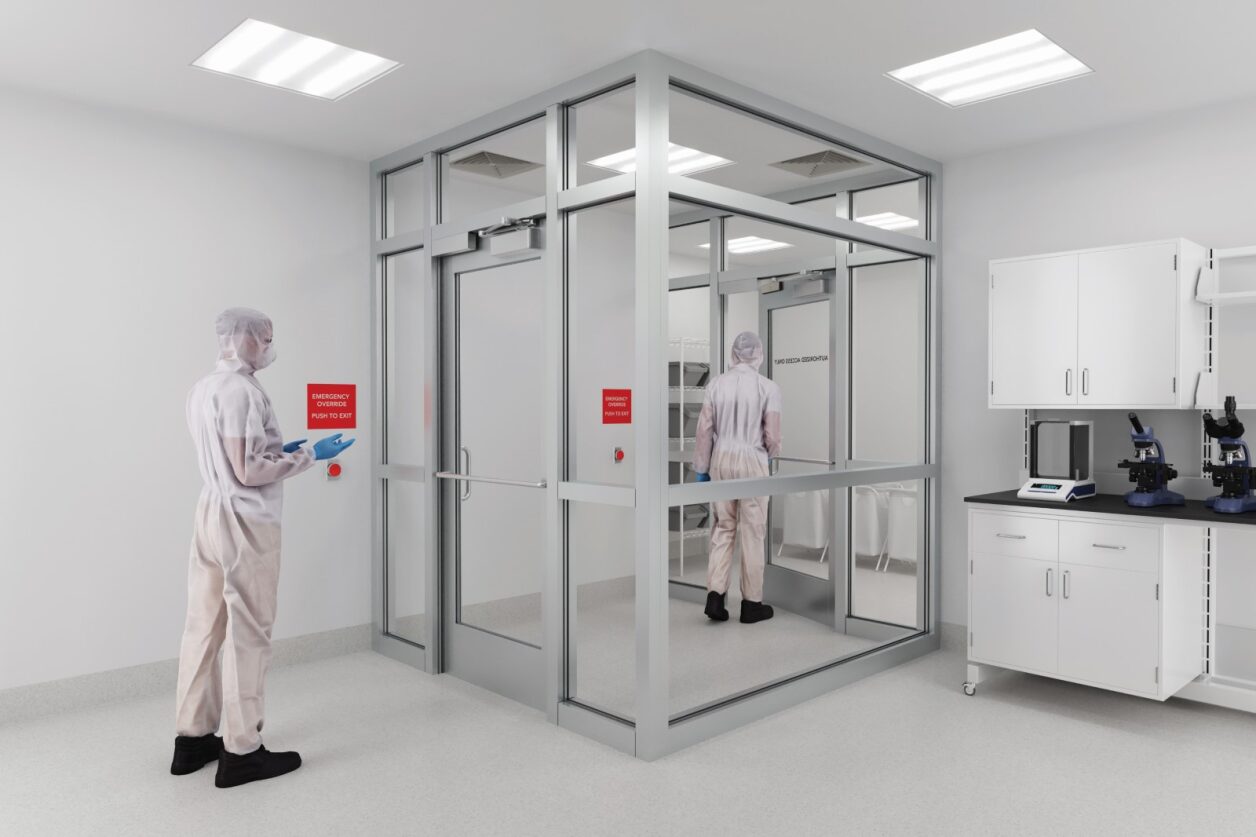 Interlocks in a Means of Egress (Proposal E61-24)
Interlocks in a Means of Egress (Proposal E61-24)
An interlock (AKA control vestibule, airlock, or mantrap) is a vestibule with two or more doors in series, where only one door can be opened at any given time. This application is commonly used to limit air transfer or for security. For example, in a data center, a control vestibule may be used to slow the passage of technicians for verification of their identity. The technician opens one door to enter the vestibule, which causes the other door(s) to lock until the first door closes. The technician can then open another door to exit the vestibule. Interlocks are also frequently used in laboratory clean rooms and infection control areas in health care facilities.
Electrified hardware is used to facilitate the coordination of doors in a control vestibule. The most common application would include electromagnetic locks on each door, controlled by door position switches. When one switch signals an open door, the mag-lock on the other door locks until the switch signals that the open door has come to a close. Other types of fail safe electrified locks could also be used in this type of system.
Current model codes do not include prescriptive requirements for interlocks in occupancies other than detention/correctional – each proposed control vestibule must be submitted to the AHJ for approval. This can lead to inconsistent operation from one project to the next, with regard to safety overrides and emergency release methods for these doors. Because an interlock could inhibit egress, it is crucial to address the required operation of these doors during an emergency.
A change addressing control vestibules has been approved for the 2027 edition of the I-Codes, and a proposal is in the works for the 2027 edition of NFPA 101 – Life Safety Code. Until these editions are adopted in a given jurisdiction, it will be up to the AHJ to decide how to evaluate a proposed control vestibule. However, the approved section provides some good guidance for these applications and could be used as the basis for a code modification request prior to adoption of the new code.
For the 2027 I-Codes, proposal E61-24 addresses the following requirements:
- Definition: The I-Codes will define a control vestibule as: A space with doors in series that are interlocked such that when one door is open other doors are restricted from opening.
- Use group or occupancy classification, and occupant load: The 2027 I-Codes will permit control vestibules in the means of egress for security, environmental control, or clinical needs in:
- Groups F (factory industrial), H-3, H-4, H-5 (high hazard), I-1, I-2 (institutional), and S (storage) where the occupant load of the room or space served by the control vestibule is less than 50.
- Groups B (business) and M (mercantile) where the occupant load of the room or space served by the control vestibule is 10 or less.
- Fire suppression/detection systems: The new section will require the building to either be equipped throughout with an automatic sprinkler system, or for the room or space served by the control vestibule to have an approved automatic smoke detection system. Activation of these systems must deactivate the interlock function of the control vestibule doors, to facilitate immediate egress through the vestibule. This requirement also applies to areas that have an emergency alarm system for hazardous materials.
- Door operation: Doors in control vestibules must swing in the direction of egress travel (exception: power-operated doors in accordance with Section 1010.3.2) and must be equipped with self-closing devices.
- Power failure: As with other special locking arrangements, loss of power must result in the deactivation of the interlock function of the doors in the control vestibule, to allow free egress. Fail safe locks will operate as required by code, as they unlock upon loss of power.
- Egress-side override: If one door in a control vestibule fails to close, it will prevent the operation of the other doors. To address this potential barrier to egress, an override switch is required on the egress side of each door. Operation of the switch must result in direction interruption of power to the electrified locks – independent of the other electronics, and the locks must remain unlocked for at least 30 seconds. An audible alarm could be incorporated to deter use of the override switch in non-emergency conditions, although this is not crucial for life safety and is not required by the code. The code addresses the required location of these override switches.
- Signage: Signage is required with instructions on the use of the interlock override switches, to ensure that building occupants understand how the control vestibule operates under emergency conditions.
- Number of control vestibules: To minimize the effect on egress, the I-Codes will state that the egress path from any point in the building shall not pass through more than one control vestibule.
- UL listings: The model codes require some types of electrified hardware to be listed to UL 294 – Standard for Access Control System Units or to UL 1034 – Standard for Safety for Burglary-Resistant Electric Locking Mechanisms. These listings are typically required when the hardware could affect egress, and electrified locks used in a control vestibule must be listed to one of these standards.
Remember, these considerations are not yet included in the model codes but should be addressed when designing a control vestibule that will be submitted to the AHJ for approval. In some jurisdictions, there may be local code modifications related to this application; it’s also possible that a jurisdiction could prohibit control vestibules. Including the new requirements in the 2027 model codes will help to ensure a more consistent approach to these special locking arrangements.
There are many additional changes and clarifications in various stages of the 2027 code development cycle that will affect doors and hardware. To give just a few examples, there are modifications in progress that address delayed egress locks, double egress pairs, a second releasing motion for doors serving individual bedrooms in dormitory suites, as well as individual restrooms. The omission of door closers on fire doors serving assisted living units is still up for discussion, as well as the degree of opening for testing the closing and latching of fire doors. Watch for future Decoded articles addressing these and other changes, and refer to the code publications for complete information.
You need to login or register to bookmark/favorite this content.

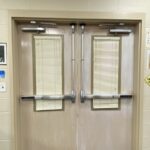
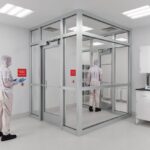

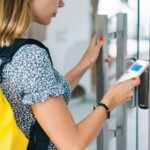
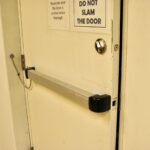
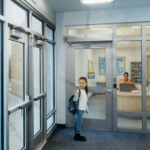
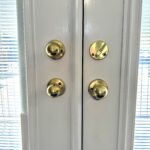
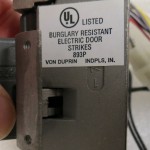
Leave A Comment